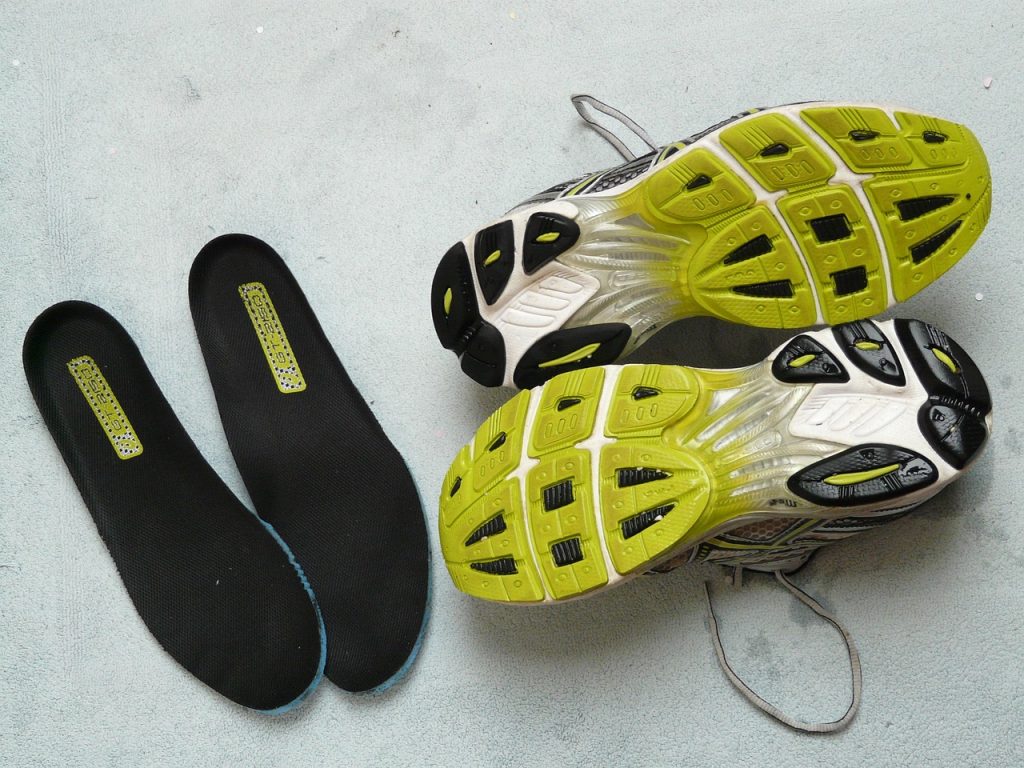Comfort, fit and health can all be impacted by some common mistakes people make when choosing gait correction orthotics. Millions of Americans are wearing the wrong orthotics and many are even choosing them incorrectly. Instead, they frequently forego expert evaluations and go with generic, one size fits all brands found in big box retailers.
Some neglect shoe type or neglect to update them as feet change with time. Choosing the wrong size or style can cause more pain than relief, delaying their healing even further after injury. Knowing these five important factors will save you time and money on ineffective solutions and keep your feet in great shape.
In this post, we’ll explore each mistake in detail. It will outline common mistakes to watch out for and provide advice for making smarter decisions in the American market for gait correction orthotics.
Key Takeaways
- This blog is for informational purposes only. Never self-diagnose gait correction orthotics without the advice of a qualified healthcare professional. Professional evaluations ensure the best fit for your individual foot architecture and requirements!
- Don’t go for the generic, one-size-fits-all orthotics you find in many retail locations in San Francisco. Custom options will more effectively correct your unique gait problems while helping you keep up with the activities you love!
- Take special care in selecting the materials used and fit of your orthotics. Choosing the proper combination will greatly impact your comfort, support, and the long-term success of the device!
- Plan regular, follow-up visits with your orthotic pro. This will facilitate further adjustments through regular check-ups, keeping your gait correction functioning at its best as you continue to adapt and your needs change.
- Have realistic expectations about the adaptation period. Remember that progress can be slow, with dedication you can achieve long-term pain relief and increased mobility.
- If you can, invest in custom orthotics! They deliver lasting dividends in foot health, avoidance of consequent ailments, and increased cost-effectiveness for residents of active urban settings including San Francisco.
Is Your Body Signaling for Orthotics?
Listen to your body out there! Knowing when your body is telling you it needs orthotics will help stop minor pains from developing into chronic injuries. Many people in urban areas like San Francisco spend hours walking or standing on concrete, which can worsen foot issues over time.
The first step is being attentive to your body’s signals, whether that’s foot pain or abnormal gait. Little, minor issues with your feet can, if left unaddressed, lead to serious issues with your gait and stance, and even your alignment. Taking action sooner rather than later can help get you back to doing what you love and prevent more serious health complications from developing.
Common Red Flags to Watch
Sharp, burning, or stabbing pain in the heel, arch, or ball of the foot is a big red flag. These symptoms should raise alarm bells! If someone is flat-footed, their arch is prone to collapsing, which causes the foot to roll inwards.
You might notice pain in feet after extended periods of walking or muscle fatigue when on your feet. First, any persistent foot discomfort, even if your shoes are properly fitted, shouldn’t be ignored. Foot alignment problems, such as overpronation or supination, can damage your knees, hips, and back.
If not corrected, over time these misalignments can lead to joint pain and wear and tear and decreased range of motion.
When Foot Discomfort Is More
Everyday aches after a tough hike or long shift are usually normal. Pain that lingers, worsens, or changes how you move should raise concern. Chronic foot pain can slow you down, making activities like running for the bus or climbing stairs tough.
If discomfort sticks around, seeing a podiatrist or orthotic specialist is a smart move. A pro can check for leg length differences, balance problems, or biomechanical issues, then suggest the right orthotic support.
Uneven Shoe Wear: A Clue
Look at the bottoms of your shoes for unusual wear—worn down heel, caved in insoles, sides of shoes falling apart. These patterns are usually indicative of gait issues or perhaps leg length discrepancies.
Monitoring shoe wear can be a simple way to gauge foot health. Catching these indicators at the onset and using proper orthotics and footwear can help alleviate discomfort and bring back more natural motion.
The 5 Big Orthotic Selection Blunders
Making an informed decision when choosing gait correction orthotics is important. One misstep can result in pain, lost capital, or at worst, more serious podiatric ailments. For instance, in the San Francisco Bay Area, walking for everyday trips is a civic norm.
We found that long commutes and sheer distance contributed to making these errors. Thoughtful, informed decisions help keep feet healthy and avoid setbacks.
1. Don’t Self-Diagnose; See Pros
Attempting to choose orthotics based on online symptom searches or recommendations from friends can set you up for failure. Experts—such as podiatrists or physical therapists—understand how to analyze foot mechanics and identify problems that are not immediately apparent.
Without their expertise, patients are left to either blindly guess or just give up and wear orthotics that don’t meet their specific requirements. Say the runner with arch pain decides on a rigid insert, only to discover that it aggravates the issue.
2. Avoid One-Size-Fits-All Traps
The lure of over-the-counter orthotics from a drug store seems simple, but they are usually a failure`12. Every individual’s foot anatomy, point of pressure distribution, and gait mechanics are unique.
Custom customizations that utilize advanced casting techniques to capture a perfect replica of the foot’s NPI. Mass-produced insoles almost never offer total arch support. They usually don’t conform to the foot’s natural shape that those with diabetes or arthritis crave for true relief.
3. Never Ignore Material or Fit
The type of plastic, foam, or carbon the orthotic is made from is super important for comfort and longevity. What works for one patient may lead to blisters or pain for the next.
A firmly fitting orthotic, providing complete contact with the arch, certainly does help. Trial and error is the best way to determine what feels and functions best.
4. Don’t Skip Crucial Follow-Ups
No device is perfect, and follow-up visits allow the provider to make adjustments to the orthotic for ongoing comfort. These follow-ups are critical to making sure the orthotic continues to be effective as feet grow or as pain moves around.
Not making them can lead to wasted time, money, and effort with inadequate results.
5. Manage Expectations: Progress Over Perfection
Adjustment to orthotics is an extensive process. A break-in schedule is important here. Assure them that the vast majority of patients experience gradual improvements, not overnight miracles.
Remember, patience and regular use yields the greatest results.

Why Custom Orthotics Usually Win
If you’re looking for long-term relief from foot pain and quality foot care, there’s no question that custom orthotics will win out every time. Though over-the-counter orthotics can provide immediate relief, custom orthotics support the specific way every individual needs.
This customizable fit ensures support exactly where you need it, maximum comfort, and actual long-term relief.
Tailored for Your Unique Biomechanics
While store-bought orthotics provide a one-size-fits-all solution, custom orthotics begin with an in-depth analysis of your foot shape and gait. They rely on processes such as 3D mapping in order to offer arch support.
This means the design is tailored to your unique biomechanics, not the average foot. This is critical for individuals with flat feet, high arches, or conditions such as supination.
Custom orthotics can address specific pain or strain that over-the-counter ones simply aren’t designed to handle. When the fit is better, your feet naturally perform better and minor irritations often disappear over time.
How Custom Prevents Worsening Issues
Custom orthotics prevent small issues from becoming major ones. If you are already feeling discomfort, loss of mobility, or even some early indications that you’re starting to walk differently, fear not.
Custom fits prevent these issues from getting worse! In the long run, this approach prevents damage to your feet.
It reduces your risk of injury and lets you stay active in your day-to-day life without interruption.
The Value Beyond Initial Cost
We know, we know—the cost looks intimidating at first. They tend to last longer—and in turn, decrease future trips to the doctor or days off from work.
Preventing additional foot pain or injury will be more costly over time and detract from your quality of life.
Advanced Tech, Better Custom Outcomes
Thanks to the advancements of technology such as 3D scanning, today’s custom orthotics fit better and feel more natural.
These new approaches keep patients acclimating to their orthotics quicker and achieving more visible improvements day in and day out.
Smart Steps to Your Best Orthotics
When you’re selecting gait correction orthotics, it pays to do your homework. It relies on you having a good grasp of your individual needs and information from professionals you trust. The aim here is more than simply getting a better fit.
It’s so much more than just immediate pain relief, better posture and the long-term effects on balance and comfort! Each step has its own purpose in getting to that end result.
The Vital Role of Expert Assessment
A proper gait analysis from a podiatrist or physical therapist is always a great place to begin. These specialists use advanced technology such as gait analysis and pressure mapping. They can catch things that you may not notice, like a lopsided gait, fallen arches, or stress markers.
This specialized care gets to the bottom of what’s causing pain or lack of stability. Tailored advice from an expert helps make sure your orthotics match the unique shape of your foot and your specific gait. This is important for obvious reasons, because one size doesn’t fit all…almost ever!
Understanding Your Specific Gait Needs
The best approach is to consider what you do and what you need, where are your pain points. Are you feeling increased discomfort after standing all day or jogging on pavement? You may be struggling with Achilles tendonitis, shin splints, or plantar fasciitis.
Understanding these patterns will inform your selection and make sure the orthotic addresses your specific foot mechanics.
Choosing Quality Materials and Design
Choosing Quality Materials and Design Comfort and durability are key to nearly any orthotic. High-quality foams or plastics will give you more support and shock absorption. Whether treating an acute injury or chronic condition, custom insoles have demonstrated effectiveness in clinical trials with patients suffering from Achilles tendinopathy.
Choose designs that will work best with your shoes and lifestyle, test a few out before making a final decision.
Discussing Options with Your Specialist
Be honest with your orthotics specialist. Discuss your normal day-to-day activities, inquire about various functionalities, and walk them through the sensations you experience during the fitting.
This collaboration paves the way for a variety of positive outcomes, ranging from pain reduction to enhanced balance and proprioception.
Beyond the Device: Ensuring Lasting Success
Orthotics are not just things that go inside your shoes—they literally impact how you walk every single day. Sure success can only be achieved with ongoing maintenance and the right habits—not just the device. For long-term success, make orthotic usage part of your routine.
Listen to your body and pay attention to how your feet are feeling as you start to wear them!
Navigating the Orthotic Break-In Period
It will probably be strange at first. Getting accustomed to new orthotics might take some time. The majority of individuals require a break-in period, typically around one to two weeks.
Begin with short stretches of wear time, starting with an hour or two and gradually increasing the time each day. This gives the body time to adapt to the new support and alignment.
It does require some patience to adhere to the schedule, but it’s well worth it. Signs of success will be reduced pain, improved equilibrium, and decreased fatigue of the foot.
If any sharp pain or other new soreness develops, it’s always wise to stop and consult a professional.
The Importance of Regular Adjustments
Our feet aren’t static—they change as we get older. Muscles, tendons, and yes, even the bones will move, particularly so with developing new movement patterns or after significant improvements in health.
This could mean orthotics need a periodic check-up in order to remain optimally effective. Custom orthotics typically last 1-3 years.
Just like your feet, they can’t retain their shape or support as your feet evolve. Frequent foot specialist visits help identify minor issues before they develop into major problems.
That’s how you stay active and on the go without hurting!
Lifestyle Choices and Orthotic Performance
Lifestyle choices play a key role. When orthotics are worn for all activities—work, exercise, or running errands—these orthotics provide the greatest benefit.
Good shoes, a healthy diet, and body movement all enhance orthotic effectiveness. Even research demonstrates that custom orthotics reduce pain and improve function in daily activities, particularly with chronic conditions.
Conclusion
Choosing the right gait correction orthotics takes more than guesswork or flashy ads. Relying on one-size-fits-all solutions often leads to wasted money and lingering pain. A custom fit from a qualified expert—like a podiatrist or physical therapist—can make all the difference. The right orthotics will improve your gait, ease discomfort, and help you move through daily life with confidence. Ready to walk pain-free? Start by getting the right support from someone who truly understands your needs.
Frequently Asked Questions
What are gait correction orthotics?
What are gait correction orthotics? Gait correction orthotics are prescription shoe inserts. They’re designed to realign your feet and legs, stride after stride, until your new walking pattern naturally minimizes pain and discomfort.
How do I know if I need orthotics?
If you often have foot, knee, hip, or lower back pain, or notice uneven shoe wear, your body may be signaling the need for orthotics. Never hesitate to ask a San Francisco foot specialist for guidance.
Why should I choose custom orthotics over store-bought?
Why should I choose custom orthotics over store-bought ones? They provide superior support, comfort, and lasting benefits than over-the-counter inserts.
What mistakes do people make when choosing orthotics?
Being more aware of these common mistakes can help prevent people from making misleading health claims. What common mistakes do people make when choosing gait correction orthotics?
Can wearing the wrong orthotics make things worse?
Yes. Wearing the wrong orthotics can exacerbate pain. In fact, they can worsen your gait, ultimately causing new injuries or other issues to develop.
How do I make sure my orthotics work well for me?
Receive a proper gait analysis, select fully custom products whenever you can, break them in slowly, and make sure to follow up for adjustments when necessary.
How long do orthotics typically last?
For example, depending on the frequency of use, custom orthotics typically last between one and five years. Replace them if they are not maintaining their shape, support, or comfort.
Walk Better, Live Better: Find Balance With Gait Correction Orthotics From The Shoe Doctor!
If joint pain, poor posture, or recurring injuries are slowing you down, gait correction orthotics could be the key to realigning your stride, enhancing comfort, and restoring your confidence. Imbalanced gait patterns often lead to foot, knee, hip, and back issues that affect your everyday mobility and long-term health. Our custom orthotics work to stabilize foot mechanics, distribute pressure evenly, and correct imbalances—supporting proper alignment from the ground up so you can walk tall and pain-free.
At The Shoe Doctor, we bring over 20 years of expertise in designing high-performance orthotics tailored to your body’s biomechanics. Russell uses advanced 3D foot-mapping technology to analyze your unique gait and foot structure, ensuring each orthotic is meticulously crafted for optimal support and function. We take a comprehensive approach to gait correction—addressing root causes, not just symptoms.
If you’re in the South San Francisco Bay Area, trust The Shoe Doctor for personalized gait correction orthotics that align your steps and protect your future. Schedule your complimentary consultation today and take the first step toward smoother, stronger movement!
Disclaimer
The materials available on this website are for informational and entertainment purposes only and not to provide medical advice. You should contact your doctor for advice concerning any particular issue or problem. You should not act or refrain from acting based on any content included in this site without seeking medical or other professional advice. The information presented on this website may not reflect the most current medical developments. No action should be taken in reliance on the information contained on this website and we disclaim all liability for actions taken or not taken based on any or all of the contents of this site to the fullest extent permitted by law.


